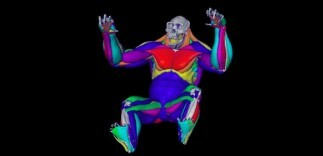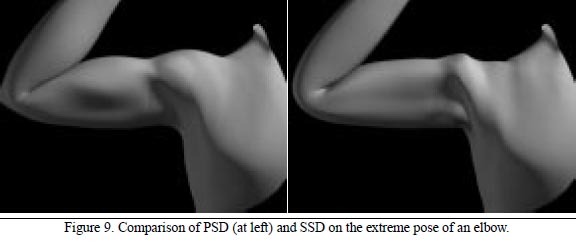
[ad_1]

Lights, camera, action. Despite what you may think, these things don’t just happen magically. They’re often the result of technological intervention. On February 9, the Academy of Motion Picture Arts and Sciences rewarded the often unsung heroes—the ones behind the tech—with their own Scientific and Technical Awards Presentation. It was held at The Beverly Hills Hotel and hosted by Chris Pine and Zoe Saldana from the upcoming Star Trek Into Darkness.. Some of the ceremony will make its way into the Academy Awards broadcast from the Dolby Theatre on Sunday, February 24th.
The sci-tech winners rarely take home a gold guy. More frequently, winners are awarded a plaque for a Scientific and Engineering Award or a certificate for a Technical Achievement Award. They only get an Oscar when they’ve been given an Academy Award of Merit. This year’s single winner of the statuette is Cooke Optics, for imparting the “Cooke look(Opens in a new window)” to movies that gives dimensionality and high-contrast.
The sci-tech crowd has one advantage over other award winners, however: time. Their achievements do not have to take place in the year prior to the awards ceremony, the Academy just requires that they “demonstrate a proven record of contributing significant value to the process of making motion pictures.”
“As a small company so far away from Hollywood, it’s the ultimate validation and satisfaction to be recognized by the most sought-after and respected awards establishment, The Academy of Motion Picture Arts and Sciences,” said J-P Smith, CEO of Imagineer Systems. The Guildford, England-based company was given the Scientific and Engineering Award for mocha, the software that gave rise to the noseless and snakelike Lord Voldemort in Harry Potter, made Mystique’s yellow eyes so haunting in X-Men, and created the astounding physical transformation of Natalie Portman in Black Swan.
And now, may we present the nine awards for 25 individual winners for this year’s Scientific and Technical Awards.
1. Cooke Optics

Zero Dark Thirty is up for five Academy Awards but some of the lenses used to shoot it have already been honored. Cooke Optics lenses produce what’s known as the “Cooke look” and were also used in this year’s A Good Day to Die Hard and in television shows like Downton Abbey. All Cooke lenses are color-matched for easy interchangeability.
2. Tissue Physically Based Character Simulation Framework

Academy painters—those who studied at European academies influenced by the Académie des Beaux-Arts—would paint figures starting from their muscles out to the skin. It’s fitting, then, that Weta Digital’s tissue physically based character sim framework did the same(Opens in a new window) for creatures in Avatar, Rise of the Planet of the Apes, Prometheus, and The Hobbit: An Unexpected Journey. Simon Clutterbuck, James Jacobs, and Richard Dorling are the ones bestowed with the award.
3. Mocha Planar Tracking Technology

Natalie Portman’s feathery transformation in Black Swan and the no-wires-in-sight stunts on The Bourne Legacy owe their magic to Mocha planar tracking and rotoscoping software from Imagineer Systems(Opens in a new window). The software can add or erase, even in shots with frenetic movement in which there are no clearly defined points. Philip McLauchlan, Allan Jaenicke, John-Paul Smith, and Ross Shain each took home a plaque for their work on the technology.
4. CINE VCLX Portable Power System

Power is everything in Hollywood and that’s what was behind the awarding of a plaque to Joe Murtha, William Frederick, and Jim Markland. The CINE VCLX Portable Power System(Opens in a new window) that they developed is a high-capacity, portable battery system that keeps cameras and other equipment running in all sorts of environments.
5. Pose Space Deformation Technique

Computer-generated characters have to strike thousands of realistic poses and, in part, they owe their ability to do so to Pose Space Deformation(Opens in a new window). The technique is particularly helpful in creating animation for characters (i.e. creatures) without a real-life equivalent. The technique’s creators are J.P. Lewis, Matt Cordner, and Nickson Fong.
6. Light System

The Light system is not much changed from when it was first introduced 15 years ago but it’s still being put to use. Developed by Lawrence Kesteloot, Drew Olbrich, and Daniel Wexler at PDI/DreamWorks(Opens in a new window), it’s had screen time in movies like Shrek and Madagascar.
7. Katana Computer Graphics Scene Management and Lighting Software

When modeling, look development, animation, and lighting teams all need to work in tandem on non-destructively editing scenes they use Katana(Opens in a new window). It was developed by Steve LaVietes, Brian Hall, and Jeremy Selan at Sony Pictures Imageworks and was used on Hotel Transylvania, The Amazing Spider-Man, The Smurfs, and Polar Express.
8. Wavelet Turbulence Software

Smoke and explosions, so essential to so many special effects, can be conjured up with wavelet turbulence software(Opens in a new window). The software’s been used in Avatar, Kung Fu Panda, Monsters vs. Aliens, Sherlock Holmes and Battleship and can be seen in the upcoming Iron Man 3 and Man of Steel. It was created by Theodore Kim, Nils Thuerey, Markus Gross, and Doug James.
9. Matthews Max Menace Arm

It sounds like the name of a movie itself, but the Matthews Max Menace Arm(Opens in a new window) is strictly behind the scenes. The adjustable arm allows for the placement of lighting in difficult-to-reach areas. It was developed by Richard Mall, who was awarded a certificate.
[ad_2]
Source link : https://www.pcmag.com/news/and-the-oscar-goes-to-the-scientific-and-technical-awards